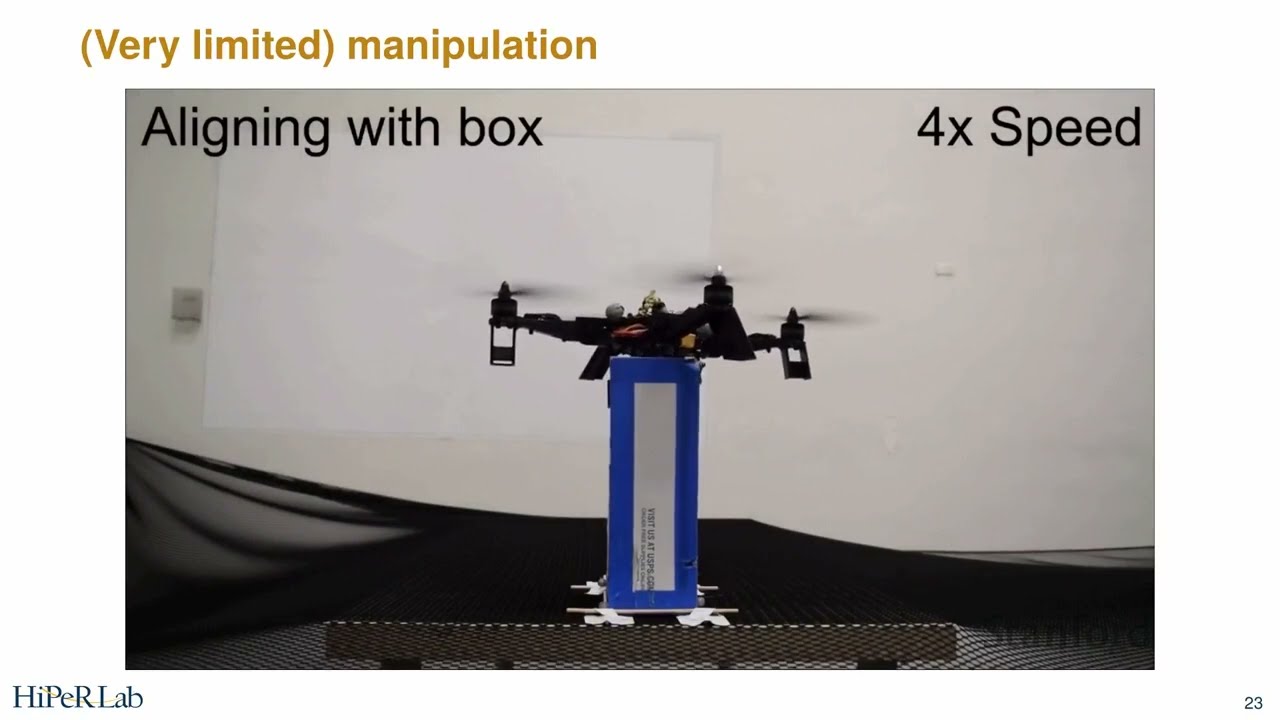The seminar explores the co-design of hardware and control systems in aerial robots to enhance performance, efficiency, and adaptability, highlighting approaches such as reactive planning, morphing mechanisms, and learning-based controllers. It also discusses innovative concepts like in-flight energy transfer and the use of large language models to automate control code generation, emphasizing the importance of integrating mechanical design with control for overcoming complex challenges.
The seminar focuses on the co-design of hardware and control systems to address challenges in aerial robotics, emphasizing the integration of mechanical design and autonomy for improved performance. The speaker highlights the evolving landscape of mobility, including autonomous cars and urban air mobility concepts, and stresses the importance of designing aerial robots that balance trade-offs such as quietness, autonomy, and safety. A key theme is moving beyond traditional sequential design processes to simultaneous mechanical and control design, using control theory as a guiding framework.
One major challenge discussed is navigating complex, cluttered environments. The speaker presents three approaches: making the system smarter through fast, reactive planning using onboard depth cameras; making the robot smaller or morphable to physically adapt to tight spaces; and “cheating” by designing robots that embrace collisions rather than avoid them. The smart approach involves integrating perception directly into the control loop to improve robustness and safety, demonstrated by drones flying autonomously through forests using depth sensing and perception-aware planning that optimizes trajectories based on visual feature tracking.
Efficiency and energy management form another critical topic. The speaker explores data-driven methods to optimize flight trajectories for energy savings, including extremum seeking control to adapt speed and orientation in real-time. Morphing mechanisms are introduced to reduce drag and improve high-speed flight efficiency by mechanically tilting propellers without additional actuators. Additionally, the concept of “flying batteries” is presented, where smaller drones deliver energy to a main drone in flight, enabling extended operation times beyond the limits of onboard batteries.
The seminar also delves into automating the design process through closed-loop co-design and learning-based control. Examples include optimizing the placement of multiple drones to carry irregular payloads robustly and developing neural network controllers that adapt to a wide range of quadcopter configurations without explicit knowledge of their physical parameters. These learning-based controllers demonstrate remarkable robustness to disturbances and faults, offering a promising path toward rapid prototyping and deployment of novel aerial robot designs.
Finally, the speaker discusses exploratory work using large language models (LLMs) to generate control code automatically. By framing controller synthesis as a genetic algorithm over Python code, with LLMs assisting in code crossover, the team has achieved preliminary success on simple control tasks like inverted pendulums and ball-and-cup problems. Although still in early stages, this approach aims to produce readable, modifiable control policies that engineers can refine, potentially accelerating the design of complex control systems. The seminar concludes with reflections on the value of integrating mechanical design with control and the potential for creative “cheats” in physics to simplify challenging problems.
